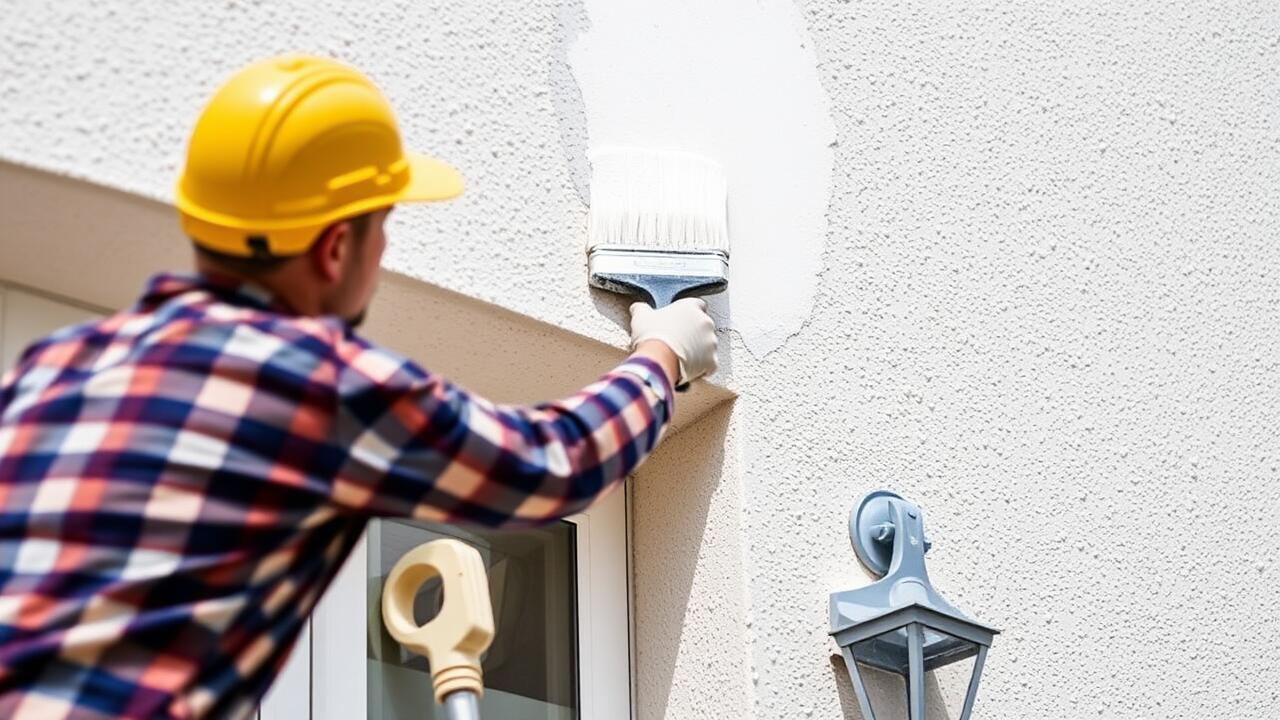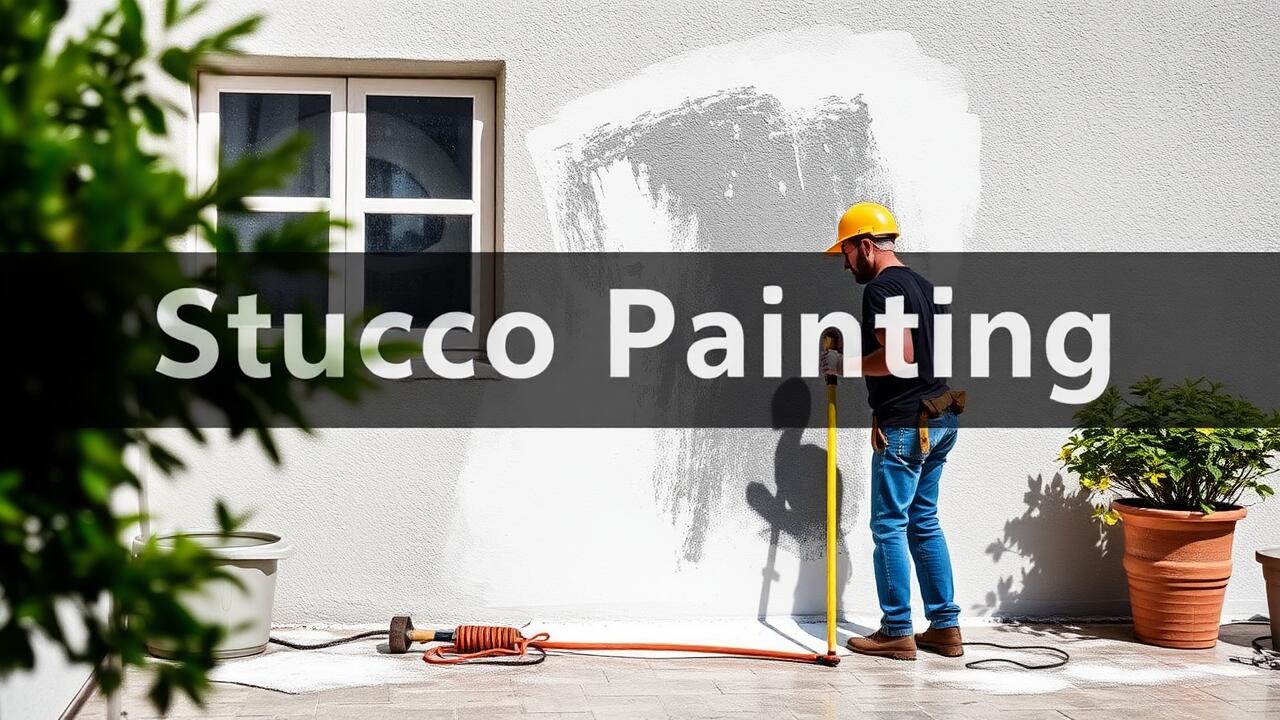
Application Techniques for Primer
Applying primer is a crucial step in achieving a flawless finish during any stucco painting project. Begin by preparing the surface thoroughly, removing any dirt or debris for optimal adhesion. Use a high-quality primer specifically formulated for stucco surfaces to ensure proper bonding. Consider using a texture sprayer or a roller with a long nap to evenly distribute the primer, allowing it to settle into the textured surface of the stucco. This thorough application method is particularly important in regions like Downtown Los Angeles, where environmental factors can impact the quality of the paint job.
When working on stucco painting in Downtown Los Angeles, attention to detail is key. Start from the top of the wall and work your way down, which helps in managing drips and unevenness. Make sure to maintain a wet edge while applying the primer to prevent lap marks. Using a brush for edges and intricate areas can ensure you reach every nook and cranny. Taking these application techniques into account can significantly enhance the overall outcome, creating a smooth and durable base for the subsequent paint layers.
Best Practices for Even Coverage
Achieving even coverage when applying primer is essential for a successful stucco painting project. Begin by selecting high-quality primer specifically designed for stucco surfaces. Use a roller with a thick nap to ensure the primer adequately fills the textured surface. Techniques for rolling involve working in manageable sections, applying the primer in a consistent direction, and maintaining a wet edge to prevent lap marks. A well-prepped area allows for better adhesion and ultimately contributes to the longevity of the paint.
When undertaking Stucco Painting in Downtown Los Angeles, Los Angeles, it is important to adjust your technique based on the weather. Avoid applying primer during extreme heat or direct sunlight, as this can cause the product to dry too quickly, leading to uneven application. Instead, prioritize working during early morning or late afternoon when temperatures are milder. Spraying is another option for achieving an even coat, particularly in intricate details or hard-to-reach areas. Regardless of the method chosen, consistent attention to technique ensures that the primer lays a solid foundation for the subsequent layers of paint.
Common Mistakes in Priming
One of the most common mistakes in priming for stucco painting is neglecting to properly prepare the surface. Failing to clean the stucco can trap dirt, dust, and loose particles that will prevent the primer from adhering effectively. Skipping steps like pressure washing or scraping off loose paint results in an uneven finish. Proper surface preparation is crucial, especially in areas like Downtown Los Angeles, where climate factors can exacerbate problems with adhesion.
Another frequent error is applying the primer too thickly. While it may seem beneficial to apply a heavier coat for better coverage, this can lead to issues with drying and overall finish quality. Thick layers of primer are prone to runs and blobs, detracting from the smooth appearance essential for stucco surfaces. Finding the right balance in application will ensure an even base, which is particularly vital for projects in regions such as Los Angeles, where visual aesthetics are highly valued.
Avoiding Pitfalls for a Smooth Finish
When it comes to avoiding pitfalls in stucco painting in Chatsworth, Los Angeles, preparation plays a crucial role. Proper surface cleaning is essential to remove any dirt, dust, or loose material that could compromise the primer's adhesion. Taking the time to patch any cracks or holes with a suitable repair compound can ensure a smoother finish. Choosing the right primer is also key; a product specifically designed for stucco will create a solid foundation for your paint.
Another common mistake is using an incorrect application technique. Spraying may provide even coverage, but rolling can offer better control, especially in textured surfaces. Whichever method is chosen, ensuring consistent pressure and overlapping strokes helps to avoid streaks and patches. Allowing adequate drying time between primer and paint applications is crucial as it affects the overall finish. Environmental factors, like humidity and temperature, can influence drying times; therefore, always check weather conditions to ensure the best results.
Timing Your Primer Application
Timing is crucial when applying primer for stucco painting in Downtown Los Angeles, Los Angeles. Weather conditions play a significant role in the effectiveness of the primer. Ideal temperatures and humidity levels can enhance adhesion and drying times. It's best to avoid extremely hot or humid periods, as these conditions can lead to problems like blistering or uneven coverage. Checking the weather forecast in advance helps ensure a successful application.
Drying times can also vary based on the type of primer used. Generally, primers require adequate time to dry before adding subsequent coats of paint. Rushing the process may result in significant issues with the final appearance of the stucco. Allowing the primer to cure fully before applying paint creates a solid foundation and enhances the longevity of the finish. Monitoring the environment during the drying period contributes to achieving an optimal outcome.
Understanding Drying Times and Weather Conditions
Understanding drying times when priming is crucial for achieving optimal results in stucco painting. Environmental factors like temperature and humidity can significantly impact how quickly a primer dries. In warmer temperatures, primers may set faster, while high humidity can prolong drying times. It's essential to check local weather conditions before starting your project to ensure the best outcome.
In locations like Downtown Los Angeles, the warm climate can be advantageous for stucco painting. However, sudden changes in weather, such as unexpected rain or cooler evenings, may lead to complications. Planning the application when the weather is stable will help ensure that the primer adheres properly and leads to a smoother finish when you proceed with the painting. Understanding these variables is vital for anyone embarking on stucco painting in Downtown Los Angeles, Los Angeles.
FAQS
What is the purpose of using primer in stucco painting?
Primer helps to create a uniform surface, enhances adhesion of the paint, and can improve the durability and longevity of the finish on stucco surfaces.
How do I apply primer to stucco?
Primer can be applied using a roller, brush, or sprayer. It is important to ensure even coverage and to follow the manufacturer's instructions for best results.
What are some common mistakes to avoid when priming stucco?
Common mistakes include skipping the primer altogether, not allowing adequate drying time, applying too thick of a coat, and neglecting to clean the surface properly before application.
How long should I wait between primer and paint application?
Generally, you should wait 1 to 4 hours between applying primer and paint, but it's essential to check the drying time specified on the primer canister, as weather conditions can affect this.
Can I paint over a previously painted stucco surface without primer?
While it's possible to paint over previously painted stucco without primer, it's not recommended as primer helps to ensure better adhesion and may improve the appearance of the final coat.


